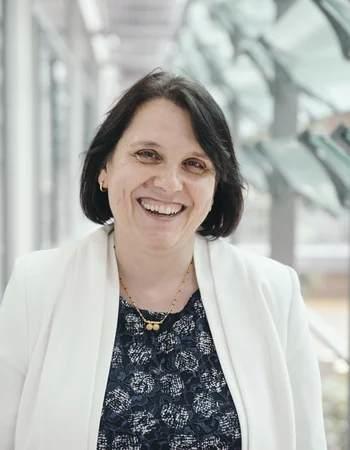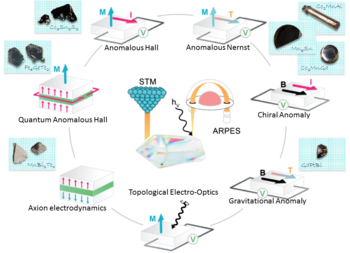TRR227 Special Colloquium: Magnetic Materials and Topology - Prof. Dr. Claudia Felser (Max Planck Institute for Chemical Physics of Solids, Dresden)
The Collaborative Research Center TRR 227 "Ultrafast Spin Dynamics" will host a special colloquium within a kick-off meeting of the second funding period. The colloquium will run online via Webex and is open to all members of the physics departments of the Freie Universität Berlin and the Martin Luther University Halle-Wittenberg without any registration.
Webex link will be provided to all members of Physics Departments of both universities via personal e-mails.
Magnetic Materials and Topology
Topology, a mathematical concept, recently became a hot and truly transdisciplinary topic in condensed matter physics, solid state chemistry and materials science. All 200 000 inorganic materials were recently classified into trivial and topological materials, such as topological insulators, Dirac, Weyl and nodal-line semimetals, and topological metals1.
More than 25% of all materials host topological bands around the Fermi energy. Beyond the single particle picture, we have identified first antiferromagnetic topological materials2. Experimentally, we have realized ferromagnetic materials, examples are Co2MnGa and Co3Sn2S2. Surprisingly all crossings in the band structure of ferromagnets are Weyl nodes or nodal lines3. Mn3Sn and YbMnBi2 are examples of non collinear antiferromagnetic Weyl semimetals, which show giant values for the anomalous Hall and Nernst effect4.
Our goal is to identify new quantum-materials for highly efficient spintronics, quantum computing and energy conversion.
1. Bradlyn et al., Nature 547 298, (2017), Vergniory, et al., Nature 566 480 (2019), Vergniory, et al., Science accepted arXiv:2105.09954.
2. Xu et al. Nature 586, 702 (2020).
3. Liu, et al. Nature Physics 14, 1125 (2018), Belopolski, et al., Science 365, 1278 (2019), Guin, et al. Advanced Materials 31 (2019) 1806622, Liu, et al., Science 365, 1282 (2019), Morali, et al., Science 365, 1286 (2019)
4. Pan, et al., Nature Materials 21 (2022) 203, Kübler and Felser, EPL 120 (2017) 47002 and EPL108 (2014) 67001, Nayak, et al. Science Advances 2 (2016) e1501870

